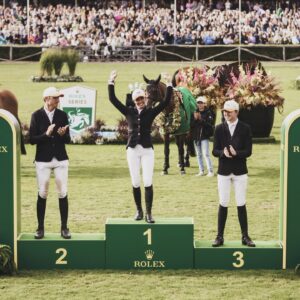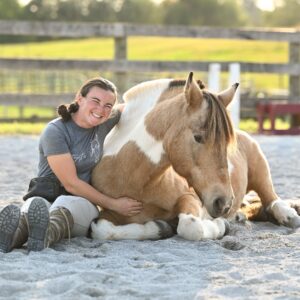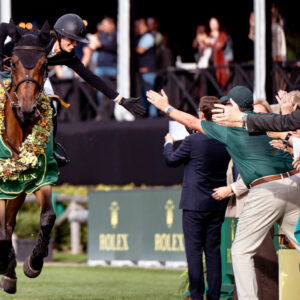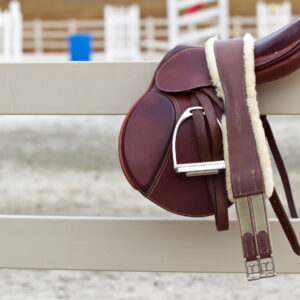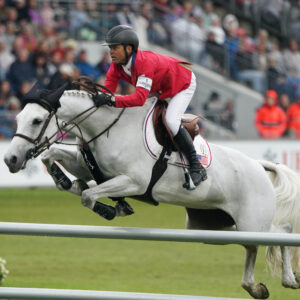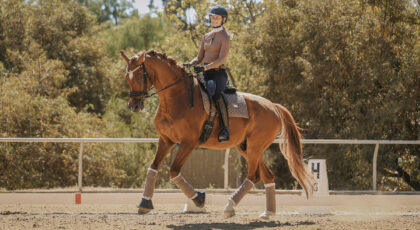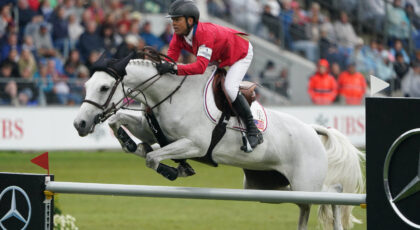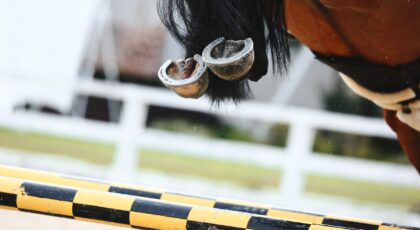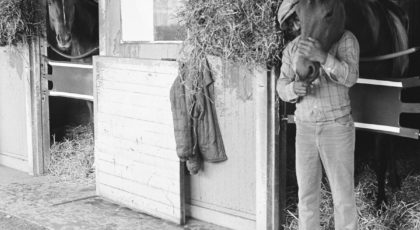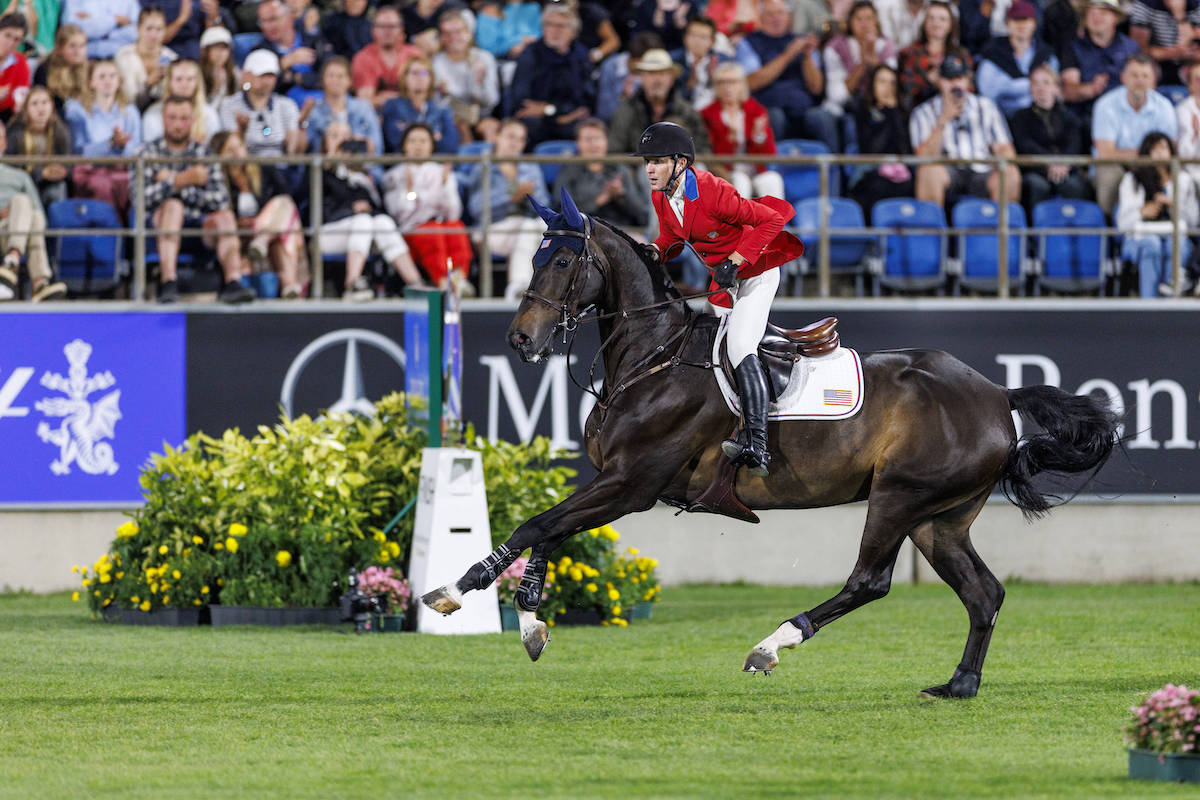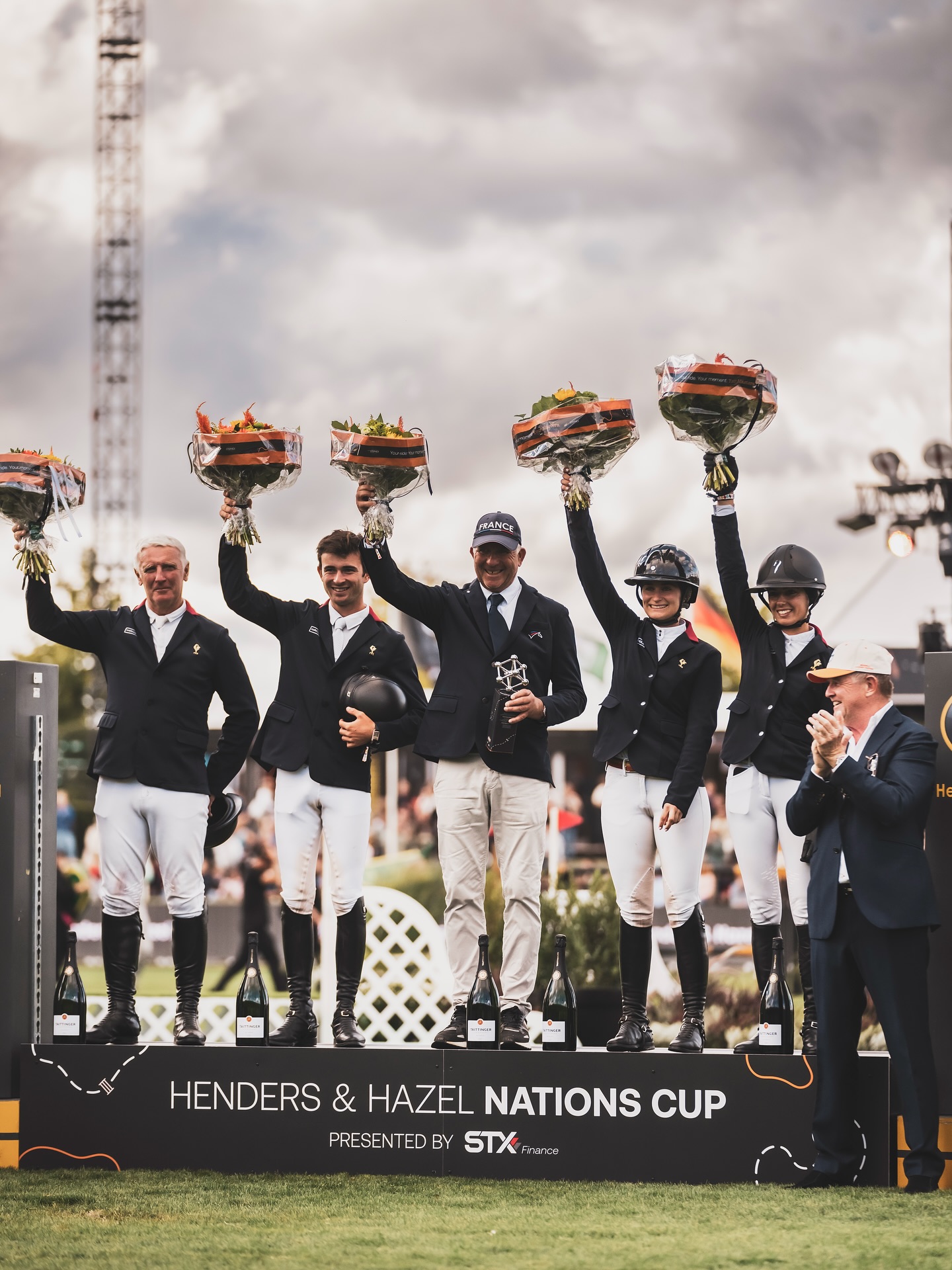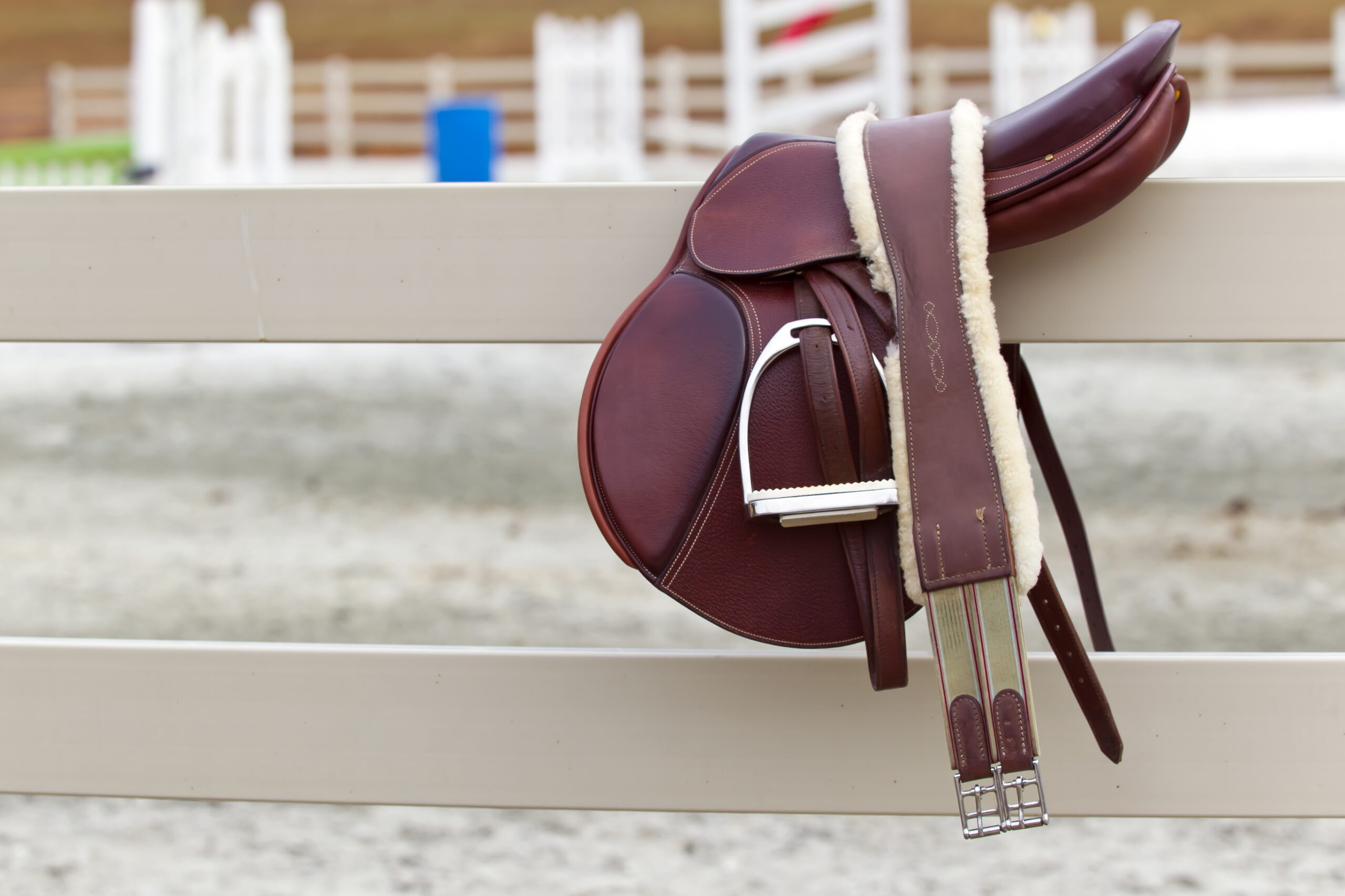A couple months ago, I described my first discovery ride on my three-year-old Warmblood True.
He had only just arrived and, in that ride, he displayed a few basic needs in his flat work. He walked too slowly, his trot pace was inconsistent, his head and neck were high and stiff, and he didn’t know how to negotiate corners. These are very common problems in youngsters just started under saddle. They simply don’t know yet what is expected of them.
Less common and more troubling is the fact that True didn’t move forward off my leg as quickly as he should. When he sees something scary (i.e., everything), he wants to suck back and delay the approach.
Moving forward is Kindergarten Lesson Number One. Many adult horses exhibit performance problems that are rooted in reluctance to move forward. I need to solve this problem before it creates others in the future. Fortunately, I can teach forward motion at the same time as teaching a fluid walk.
I start True with a saddle that fits his young back comfortably and the gentlest possible bit. A thick eggbutt snaffle does the trick. Remember, thicker bits are more gentle than thin ones, and snaffles with no shank are more gentle than bits with shanks. Start your young horse with a super-mild bit. You can always go stronger if you have to, but we want a nice soft mouth on the adult horse—which comes from gentle bits and soft hands.
Go for a nice easy mount, and stroke the horse for standing still during and after the mount. OK, let’s get to work on that pokey walk and this forward motion business.
Horses test right from the get-go, so it helps to have a plan. I want True to stand motionless for about 30 seconds after I mount, to instill the lesson that we do not walk off when he feels like it. We only walk off when the rider says it’s time.
After 30 seconds at a standstill, and after stroking for reward, I touch his sides with my calves. Nothin’.
I try again, harder. Nope.
True has just offered his first test. So here I use a little negative reinforcement: I apply strong pressure with both legs (groin to heel, not just calves) and say “Walk.” If necessary, I cluck once or twice. He knows voice commands and clucks from the round pen. He meanders off.
I don’t want a meander, so I continue to apply my legs and say again, “Walk.” He knows the pace that is desired from our work in the round pen. Now he moves forward! I release my leg pressure to neutral and offer rewards in my words, voice, and stroking.
If True had not responded in that way, he would require more training in the round pen or on a longe line, learning the true meaning of the word “walk.”
Many people believe that riding a horse is like driving a car—you have to keep your foot on the gas to keep the car moving. But horses are living animals with smart brains that learn like big fat sponges. Teach your horse the pace you want instead of maintaining it for him with your aids. I want True to learn right away that HE is responsible for keeping pace, not me.
He walks along well for a minute or so, then slows. Only a little bit, but it’s noticeable. So immediately, I apply strong pressure with both legs. This time, he moves forward right away as if to say “Oh! Whoops, I forgot.” I release to neutral and reward again with strokes and soothing phrases.
Each time True slows, I repeat this lesson. Soon he’s got it down for today.
He’ll test me again in future rides, but the first brick in his under-saddle foundation has been laid and we’re on our way. Baby True is learning to walk at a brisk, fluid pace and to move forward off my leg at the same time.
Related reading:
Brain-Based Horsemanship is a weekly column that chronicles Janet Jones, PhD, and her journey with True, a Dutch Warmblood she trained from age three using neuroscience best practices. Read more about brain-based training in Jones’ award winning book Horse Brain, Human Brain.
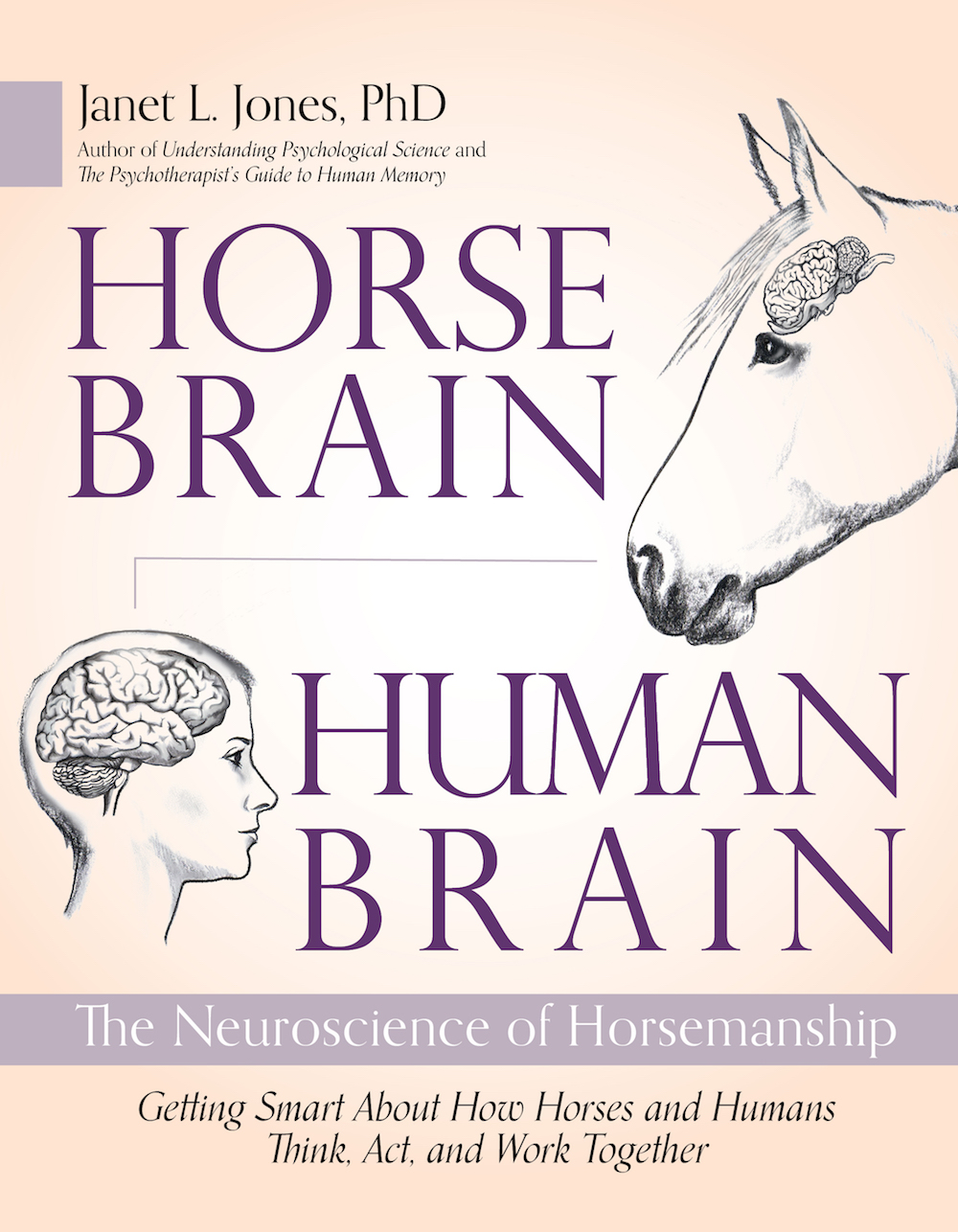
A version of this story originally appeared on janet-jones.com. It is reprinted here with permission.


 June 7, 2023
June 7, 2023 







